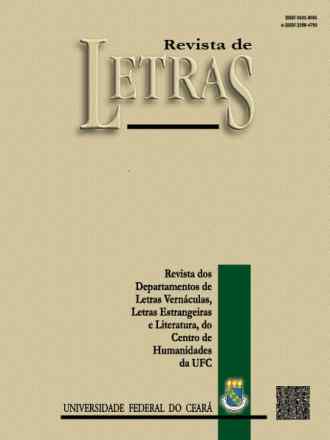COMENTÁRIOS SOBRE A ESTRUTURA FONOLÓGICA DOS DITONGOS NASAIS NO PORTUGUÊS DO BRASIL
Revista de Letras
COMENTÁRIOS SOBRE A ESTRUTURA FONOLÓGICA DOS DITONGOS NASAIS NO PORTUGUÊS DO BRASIL
Autor Correspondente: W. L. Wetzels | [email protected]
Palavras-chave: Ditongo nasal, nasalidade
Resumos Cadastrados
Resumo Português:
Neste artigo, defendo a hipótese que a representação lexical dos ditongos nasais no PB como seqüências /VGN/, segundo propôs Câmara Jr., é incompatível com as propriedades gerais da gramática fonológica do PB. Mais especificamente, a conseqüência da proposta de Câmara Jr., que é estabelecer uma representação lexical idêntica de seqüências que consistem de uma vogal oral seguida por uma vogal nasal heterossilábica (Coimbra) e seqüências que consistem de um ditongo nasal (cãimbra), volta a colocar sérios problemas descritivos que não podem ser resolvidos de forma satisfatória. A hipótese da seqüênica /VGN/ é, portanto, rejeitada. Em vez disso, assumo que apenas uma representa- ção lexical concreta dos ditongos nasais é compatível com os fatos de acento e da estrutura da sílaba do PB
Resumo Inglês:
In this paper, I intend to show that the hypothesis according to which nasal diphthongs in BP originate from lexical /VGN/ sequences, as was proposed by Câmara Jr., is incompatible with some general properties of the phonological grammar of PB. Particularly, one consequence of the proposal of Câmara Jr., which is that sequences consisting of an oral vowel followed by a hetero-syllabic nasal vowel (Coimbra) and sequences representing nasal diphthongs have identical lexical representations (cãimbra), generates serious descriptive problems, which cannot be solved in a satisfactory manner. Therefore, the hypothesis of an underlying /VGN/ representation for nasal diphthongs is rejected. Instead, it is shown that only a very ´concrete´ lexical representation of nasal diphthongs is compatible with the facts of stress and syllable structure of BP.

